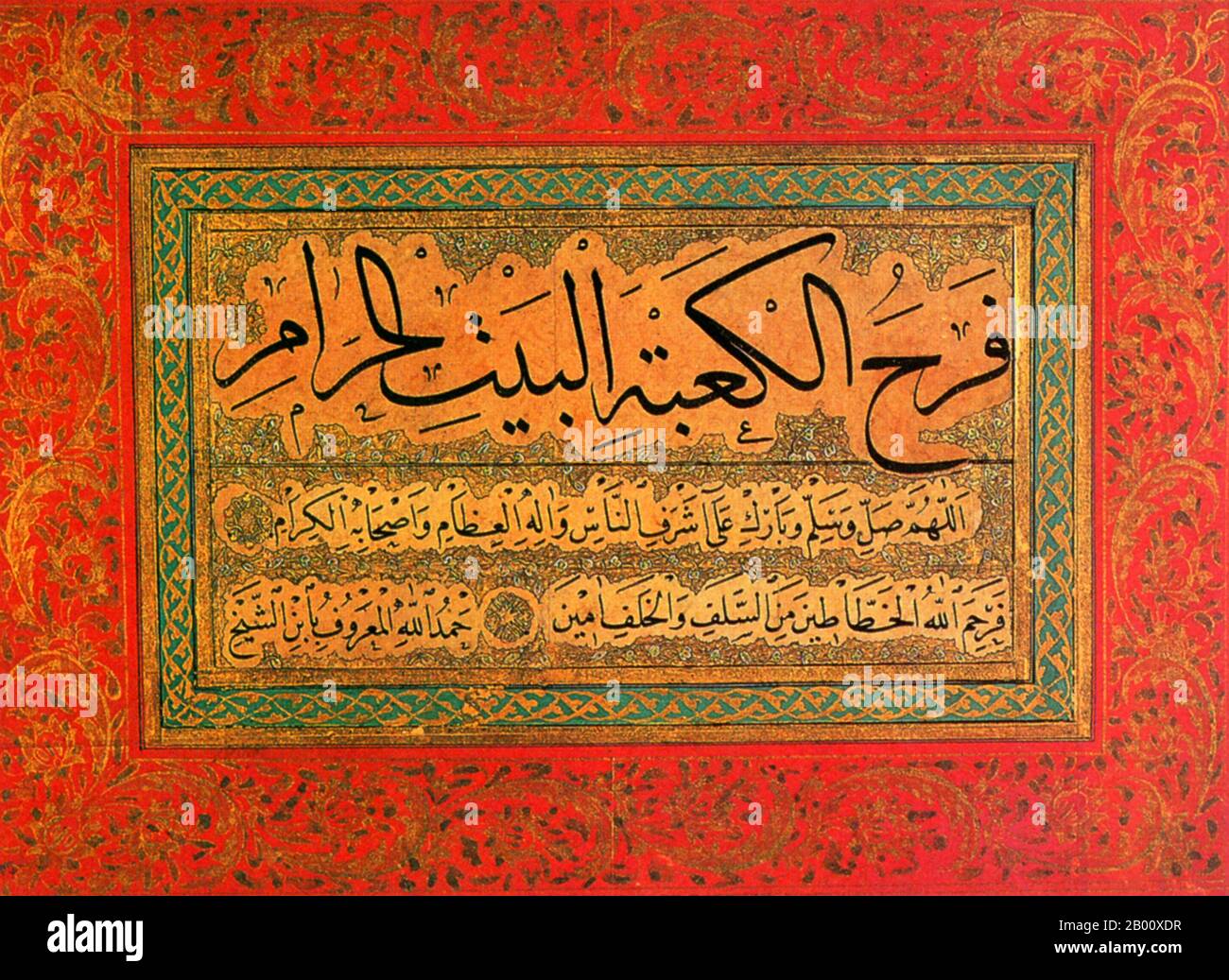Shaykh hamdullah al amasi Stock Photos and Images
 Turkey/Iran: A page from a calligraphy album, c. 1500, in ‘thuluth’ and ‘naskh’ scripts by renowned Ottoman calligrapher Shaykh Hamdullah al-Amasi (1436-1520). Naskh script is considered one of the most renowned styles of Islamic calligraphy. Naskh emerged from changes in Kufic script. The widespread use of the style is due to its suitability for writing. Thuluth script, along with Naskh script, was applied to a great many texts. This particular style was mostly used for inscriptions in mosques, religious places and architectural monuments. Stock Photohttps://www.alamy.com/image-license-details/?v=1https://www.alamy.com/turkeyiran-a-page-from-a-calligraphy-album-c-1500-in-thuluth-and-naskh-scripts-by-renowned-ottoman-calligrapher-shaykh-hamdullah-al-amasi-1436-1520-naskh-script-is-considered-one-of-the-most-renowned-styles-of-islamic-calligraphy-naskh-emerged-from-changes-in-kufic-script-the-widespread-use-of-the-style-is-due-to-its-suitability-for-writing-thuluth-script-along-with-naskh-script-was-applied-to-a-great-many-texts-this-particular-style-was-mostly-used-for-inscriptions-in-mosques-religious-places-and-architectural-monuments-image344228131.html
Turkey/Iran: A page from a calligraphy album, c. 1500, in ‘thuluth’ and ‘naskh’ scripts by renowned Ottoman calligrapher Shaykh Hamdullah al-Amasi (1436-1520). Naskh script is considered one of the most renowned styles of Islamic calligraphy. Naskh emerged from changes in Kufic script. The widespread use of the style is due to its suitability for writing. Thuluth script, along with Naskh script, was applied to a great many texts. This particular style was mostly used for inscriptions in mosques, religious places and architectural monuments. Stock Photohttps://www.alamy.com/image-license-details/?v=1https://www.alamy.com/turkeyiran-a-page-from-a-calligraphy-album-c-1500-in-thuluth-and-naskh-scripts-by-renowned-ottoman-calligrapher-shaykh-hamdullah-al-amasi-1436-1520-naskh-script-is-considered-one-of-the-most-renowned-styles-of-islamic-calligraphy-naskh-emerged-from-changes-in-kufic-script-the-widespread-use-of-the-style-is-due-to-its-suitability-for-writing-thuluth-script-along-with-naskh-script-was-applied-to-a-great-many-texts-this-particular-style-was-mostly-used-for-inscriptions-in-mosques-religious-places-and-architectural-monuments-image344228131.htmlRM2B00XDR–Turkey/Iran: A page from a calligraphy album, c. 1500, in ‘thuluth’ and ‘naskh’ scripts by renowned Ottoman calligrapher Shaykh Hamdullah al-Amasi (1436-1520). Naskh script is considered one of the most renowned styles of Islamic calligraphy. Naskh emerged from changes in Kufic script. The widespread use of the style is due to its suitability for writing. Thuluth script, along with Naskh script, was applied to a great many texts. This particular style was mostly used for inscriptions in mosques, religious places and architectural monuments.